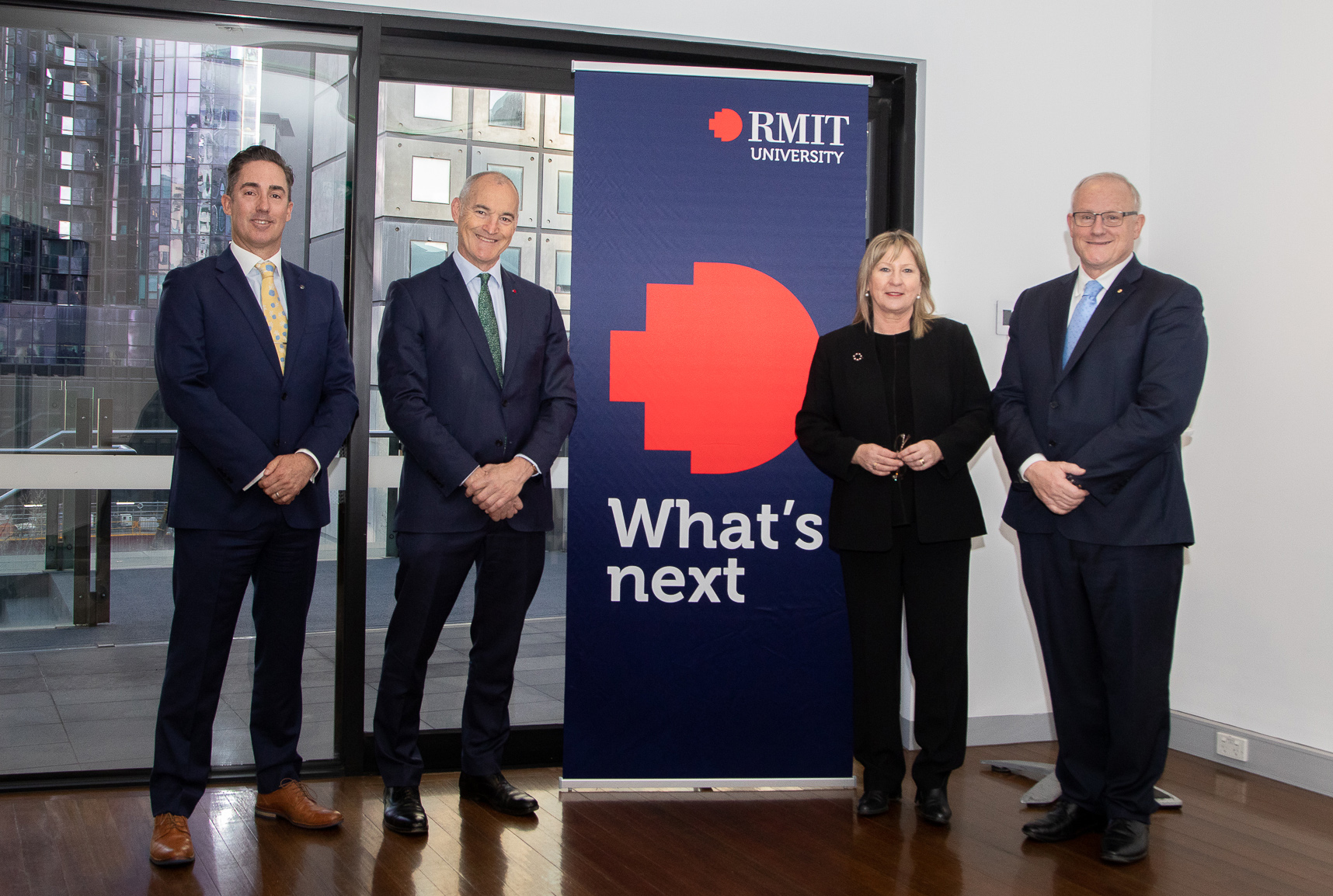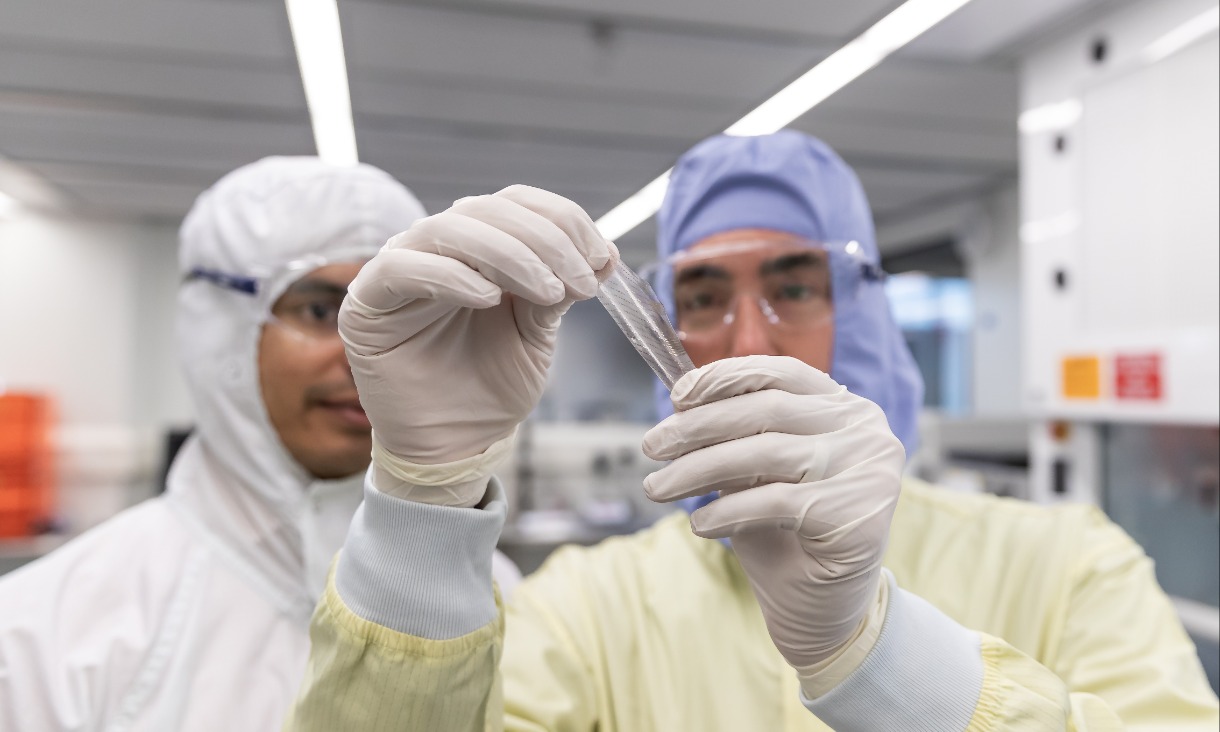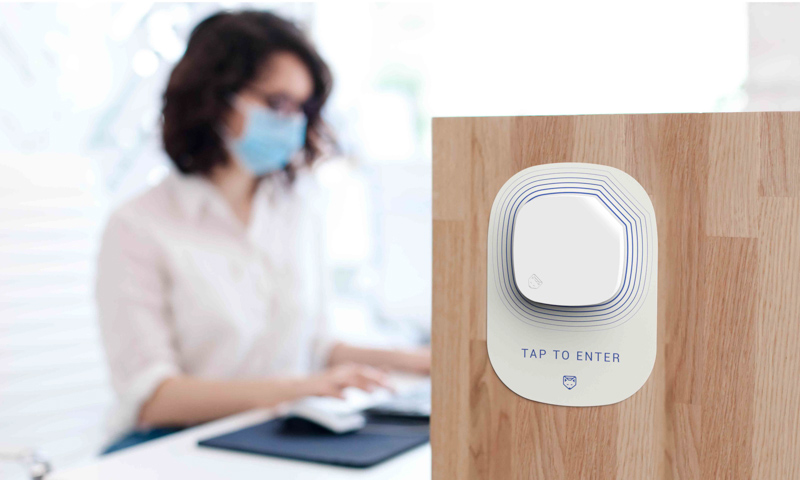Entrepreneurs and researchers will collaborate to develop new medical technologies for healthcare and diagnostics thanks to funding for a $16.7 million facility based at RMIT University.
The Victorian Medical Device Prototyping and Scale-Up Facility has been announced by Minister for Higher Education Gayle Tierney, supported through $12.7 million in funding from the Victorian Higher Education State Investment Fund (VHESIF).
Key points
- Focus on home-grown technologies and advanced, personalised healthcare devices for prevention and diagnosis
- First ISO-accredited prototyping facility in Asia-Pacific to support rapid translation of partnered and industry-led research projects in wearable, nearable and flexible medical technologies
- Brings together start-ups, small businesses and researchers to collaborate on field and clinical trials, towards regulatory certification and commercialisation
- Supported through $12.7m in VHESIF funding, enabling a $16.7 million total project investment (cash and in-kind)
The state-of-the-art facility, to be developed at RMIT’s City campus, will help cement Victoria’s unique position as a medical device manufacturing and prototyping hub for Australia and the Asia-Pacific region.
“This is a significant investment in medical technology that will drive innovation to support the healthcare needs of people across Australia,” Tierney said.
 Sleeptite CEO Cameron van den Dungen, Vice-Chancellor and President of RMIT Professor Alec Cameron, Minister for Higher Education Gayle Tierney, Deputy Vice-Chancellor Research and Innovation and Vice-President Professor Calum Drummond.
Sleeptite CEO Cameron van den Dungen, Vice-Chancellor and President of RMIT Professor Alec Cameron, Minister for Higher Education Gayle Tierney, Deputy Vice-Chancellor Research and Innovation and Vice-President Professor Calum Drummond.
RMIT Deputy Vice-Chancellor Research and Innovation and Vice-President, Professor Calum Drummond AO, said the initiative would create jobs, develop skills and build future opportunities, to advance post-pandemic renewal.
“RMIT is proud to work together with the Victorian Government to support a thriving innovation ecosystem for Victoria, driven by academic and industry partnership,” Drummond said.
“The skills required to design, build, integrate, operate and use data from medical devices cover every sector and will be integral to both economic recovery and sovereign capability.
“This new facility bridges the gap between research and impact, supporting the deep collaborations we need to accelerate the translation of brilliant ideas into innovative, home-grown technologies.”
The ISO-accredited facility is the first of its kind in Australia and the Asia-Pacific.
It will be accessible to universities and industry across the region for collaborations on wearables (wireless electronic devices that can be worn as accessories, embedded in clothing or implanted in the body), nearables (smart devices that can sense and send data but do not need to be attached to a person) and flexible medical technologies (soft, skin-like and ultralight electronics).
Professor Sharath Sriram, RMIT Project Leader and Co-Director of RMIT’s Functional Materials and Microsystems Research Group, said the medical devices developed at the facility would improve and save lives.
“The home-grown technologies and solutions we develop here will benefit critical support and care sectors including disability support, mental health, aged care and family violence,” Sriram said.
“This facility gives us the sovereign capability to go from design to a validated diagnostic product, with sufficient quantities to undertake clinical and field trials.”
Led by RMIT University, the project consortium includes universities (Swinburne University, Deakin University, Monash University), industry partners (Sleeptite, Nutromics, Soterius, Vlepis, nthalmic, Innovative Manufacturing CRC), quality management and design partners (Brandwood CKC, Fluffy Spider Technologies, Outerspace Design, Design+Industry) and peak bodies (Australian Manufacturing Growth Centre, Cooperative Research Australia, MTP Connect).
 RMIT’s Professor Sharath Sriram and Sleeptite CEO Cameron van den Dungen inspect a flexible sensor to be used in non-invasive monitoring for aged care residents.
RMIT’s Professor Sharath Sriram and Sleeptite CEO Cameron van den Dungen inspect a flexible sensor to be used in non-invasive monitoring for aged care residents.
Innovative home-grown tech
The new facility’s distinct focus on wearables and nearables expands the capabilities and commercial potential of Melbourne’s renowned biomedical research sector.
Keeping design and manufacturing local, the facility will support the development and commercialisation of innovative technologies, with initial projects set to include:
- an and other infectious respiratory illnesses such as influenza and MERS
- , using stretchable electronics technology to monitor sleep and vital signs
- minimally-invasive wearables for health monitoring and diagnostics
Cameron van den Dungen, CEO of Melbourne-based research and advanced manufacturing company Sleeptite, said the lack of onshore capability was a major roadblock for the commercial translation of fundamental breakthroughs made by Australian researchers.
“Research and manufacturing in healthcare is undergoing a dramatic transformation and this facility will ensure Australian companies like Sleeptite have the ability to be global leaders in this space, employ local workers and most importantly keep Australian IP truly Australian,” van den Dungen said.
“The facility will ensure we can bring our critical research and product development activity back home to Melbourne.
“This investment from the Victorian Government will incentivise Australian medical and biotech companies, like Sleeptite, to manufacture and commercialise their products onshore, encouraging innovation for the entire sector and strengthening our sovereign capability.”

One-of-a-kind pathway
The Victorian Medical Device Prototyping and Scale-Up Facility will be a one-of-a-kind pathway for medical device accreditation, attracting talent and investment.
The VHESIF funding initiative behind this announcement was developed in response to the significant impact of the coronavirus pandemic on universities. The same round of funding will also support an electric vehicles applied research facility at RMIT.
Both projects are part of the Victorian Government’s $62.5 million investment in RMIT to support post-pandemic economic and social recovery in Melbourne, including $44.6 million in VHESIF funding to continue the .
Advanced manufacturing and design ecosystem
The facility will be complemented by a dynamic manufacturing ecosystem of partners, entrepreneurs and services who will collaborate with Australian start-ups and small businesses to support new ideas from concept through planning, prototyping, scale-up, trials, design, user experience, data insights and commercialisation.
An engagement program will lift participation of young people and women in STEM fields, working closely with schools and career counsellors to showcase careers in STEM and advanced technologies.
The facility will build capability and support the development of new technologies in a booming field, with global spending on wearables expected to total year – an 18.1% leap from US$69 billion in 2020.
The Victorian Medical Device Prototyping and Scale-Up Facility is expected to be in operation by mid 2023.







